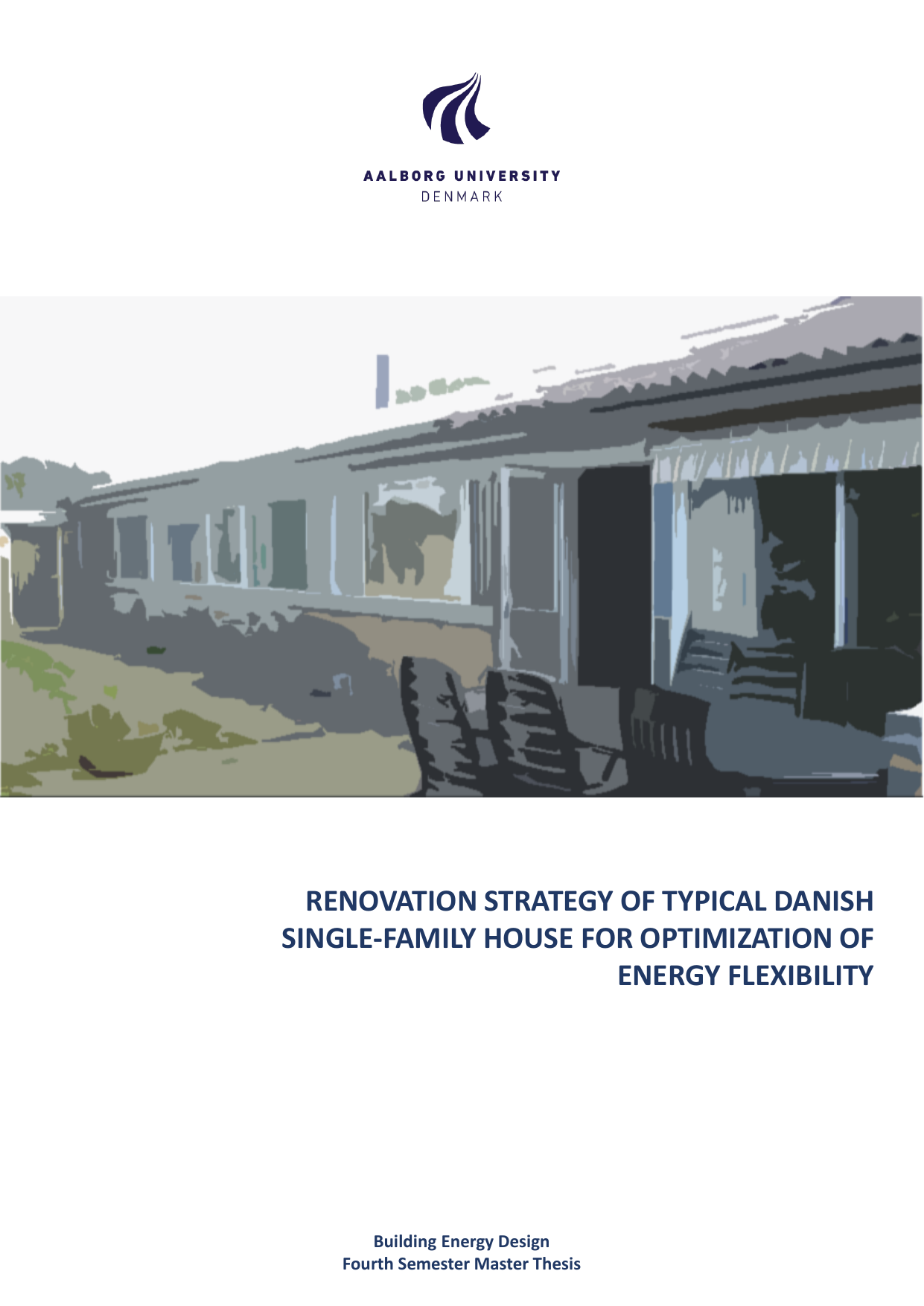
Renovation strategy of typical Danish single-family house for optimization of energy flexibility.
Term
4. Term
Education
Publication year
2019
Submitted on
2019-01-10
Pages
115
Abstract
This work is about renovation strategies for a typical Danish single family house with a focus on energy efficiency and energy flexibility. The potential of increasing the energy efficiency and flexibility provided to the energy grid through specific building component combinations are investigated. Heating cut-off periods are applied to a building simulation model with different renovation components and packages. Building energy flexibility and efficiency are evaluated with respect to comfort preservation and heating power peak shifting. Within this study, the largest impact on energy efficiency and flexibility seems to be from thermal transmittance of the building envelope. However, effective thermal inertia affects energy flexibility only if the thermal resistance of the envelope is sufficient.
Keywords
Documents
